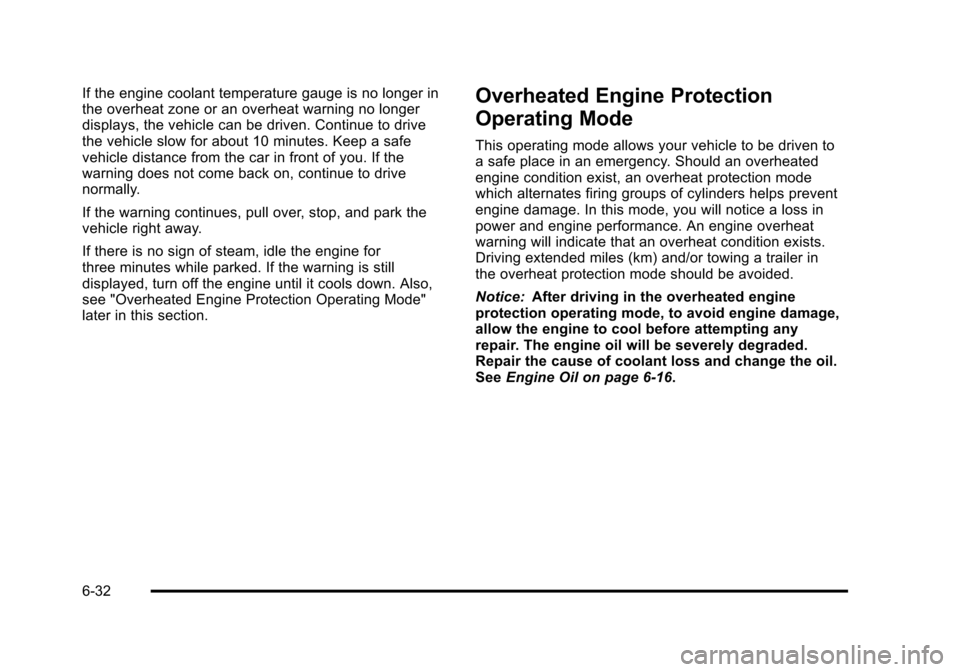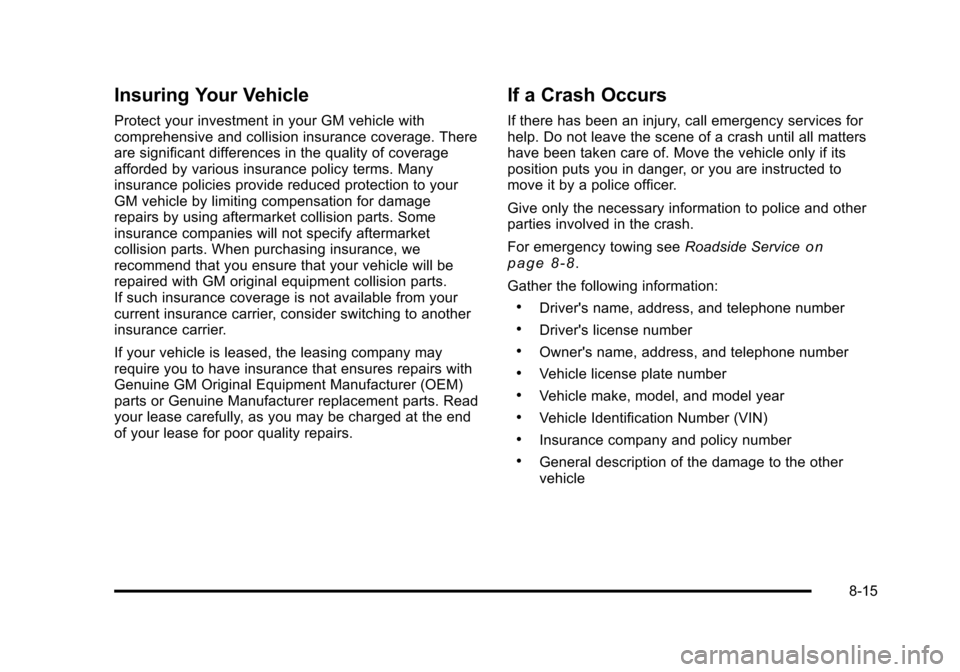emergency towing CADILLAC STS 2011 1.G Owners Manual
[x] Cancel search | Manufacturer: CADILLAC, Model Year: 2011, Model line: STS, Model: CADILLAC STS 2011 1.GPages: 528, PDF Size: 4.96 MB
Page 382 of 528

Black plate (32,1)Cadillac STS Owner Manual - 2011
If the engine coolant temperature gauge is no longer in
the overheat zone or an overheat warning no longer
displays, the vehicle can be driven. Continue to drive
the vehicle slow for about 10 minutes. Keep a safe
vehicle distance from the car in front of you. If the
warning does not come back on, continue to drive
normally.
If the warning continues, pull over, stop, and park the
vehicle right away.
If there is no sign of steam, idle the engine for
three minutes while parked. If the warning is still
displayed, turn off the engine until it cools down. Also,
see "Overheated Engine Protection Operating Mode"
later in this section.Overheated Engine Protection
Operating Mode
This operating mode allows your vehicle to be driven to
a safe place in an emergency. Should an overheated
engine condition exist, an overheat protection mode
which alternates firing groups of cylinders helps prevent
engine damage. In this mode, you will notice a loss in
power and engine performance. An engine overheat
warning will indicate that an overheat condition exists.
Driving extended miles (km) and/or towing a trailer in
the overheat protection mode should be avoided.
Notice:After driving in the overheated engine
protection operating mode, to avoid engine damage,
allow the engine to cool before attempting any
repair. The engine oil will be severely degraded.
Repair the cause of coolant loss and change the oil.
See Engine Oil on page 6‑16.
6-32
Page 509 of 528

Black plate (15,1)Cadillac STS Owner Manual - 2011
Insuring Your Vehicle
Protect your investment in your GM vehicle with
comprehensive and collision insurance coverage. There
are significant differences in the quality of coverage
afforded by various insurance policy terms. Many
insurance policies provide reduced protection to your
GM vehicle by limiting compensation for damage
repairs by using aftermarket collision parts. Some
insurance companies will not specify aftermarket
collision parts. When purchasing insurance, we
recommend that you ensure that your vehicle will be
repaired with GM original equipment collision parts.
If such insurance coverage is not available from your
current insurance carrier, consider switching to another
insurance carrier.
If your vehicle is leased, the leasing company may
require you to have insurance that ensures repairs with
Genuine GM Original Equipment Manufacturer (OEM)
parts or Genuine Manufacturer replacement parts. Read
your lease carefully, as you may be charged at the end
of your lease for poor quality repairs.
If a Crash Occurs
If there has been an injury, call emergency services for
help. Do not leave the scene of a crash until all matters
have been taken care of. Move the vehicle only if its
position puts you in danger, or you are instructed to
move it by a police officer.
Give only the necessary information to police and other
parties involved in the crash.
For emergency towing seeRoadside Service
on
page 8‑8.
Gather the following information:
.Driver's name, address, and telephone number
.Driver's license number
.Owner's name, address, and telephone number
.Vehicle license plate number
.Vehicle make, model, and model year
.Vehicle Identification Number (VIN)
.Insurance company and policy number
.General description of the damage to the other
vehicle
8-15